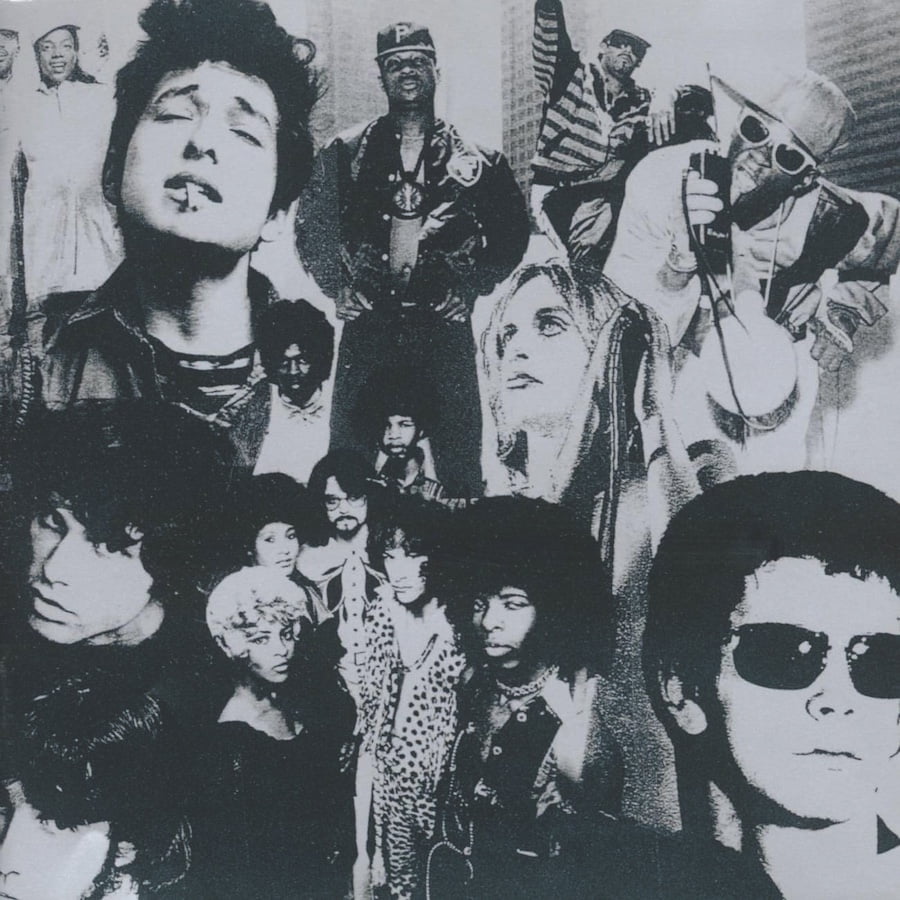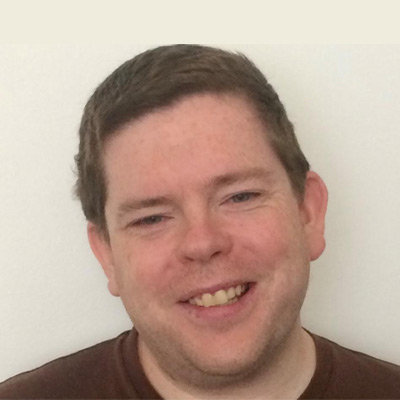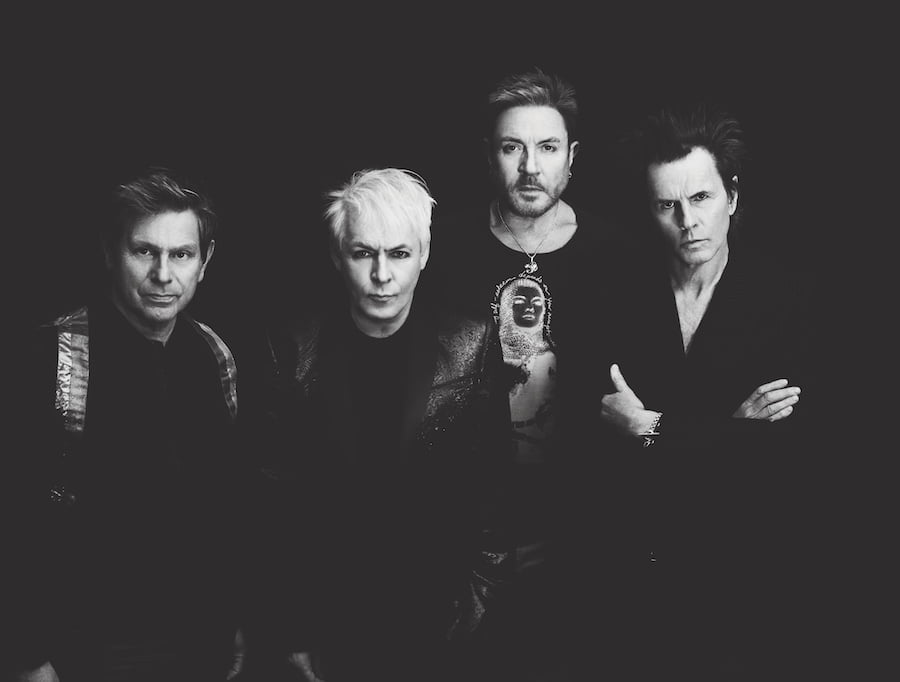
Photo by Stephanie Pistel
What began as a knockabout way to take the pressure off being inducted into The Rock And Roll Hall Of Fame has become Duran Duran’s quickest album since their debut. Far more than a simple Halloween-themed covers record, Danse Macabre also reinvents old Duran favourites and has three stunning new tunes, too. In the exclusive story behind studio LP 16, the band tell Classic Pop: “Typically, we labour over albums. This fell into place very easily.”
It’s nearly midnight on a Sunday evening and Simon Le Bon is doing an impression of a foghorn. “HARRNK. HARRRRNNNKKK!”
No, he’s not reviving an ancient beef with Tony ‘Foghorn’ Hadley of Spandau Ballet. Go to your room for even thinking such slurs.
Instead, Simon is gleefully trying to recapture the noise of the sinister rhythm that drives the title track of Duran Duran’s latest album.
If it sounds like an ancient aquatic blast from the depths of the sea underpins Danse Macabre, that’s because that’s precisely what it is.
“It’s the old foghorn at Whitby,” burbles Le Bon happily. He’s one of life’s great enthusiasts, Simon Le Bon. When he’s describing any of his passions, whether it’s obscure new prog-rock bands or vintage maritime sea defences, he speaks at 100mph and would love you to join in.
“We found a recording in the BBC archives of the foghorn, which is called the Hawsker Mad Bull. It looks like a house, and it’s got enormous trumpets either side of it that bend round to face the sea.
Go and have a look at a photo, you’ll love it. That’s what the foghorn sound is on Danse Macabre. HARRNK. HARRRRNNNKK!”
Alongside his infectious determination to sweep you up into sharing his enthusiasms, Simon Le Bon is one of the most downright onomatopoeic people Classic Pop has ever met.
Most international pop icons would rather be thrashed with twigs than sing, away from the comfort of the stage.
Anyone lucky enough to interview Simon could flog a one-off album for a fortune on the shadier side of online collector sites, based on whatever he happens to sing in interviews that day. Today? Canned Heat, Dusty Springfield, Billie Eilish and The Beatles.
In addition to songs, he’ll happily explain himself by all manner of percussive effects to his interviewers.
“The Hawsker Mad Bull foghorn isn’t used now,” he sighs. “That’s sad, but at least we’ve put it on a record for posterity. We’ve paid for its use, it’s all legit.”
Even by his standards, Le Bon is full of enthusiasm and mischief as he chats to CP. He and wife Yasmin have just checked into their hotel in Toronto, the night before Duran’s show at the city’s Scotiabank Arena.
We speak to Roger Taylor over Zoom from his hotel in Washington DC, with Nick Rhodes and John Taylor joining us the day before a show in Boston. John is waiting to meet a friend to go round Boston’s John F Kennedy Library.
Nick? “I’m going to visit a statue of Edgar Allan Poe after I’ve spoken to you.” Because of course that’s what Nick Rhodes does after an interview. Synth-pop’s ongoing human art project would hardly be “Maybe grabbing some lunch,” now would he?
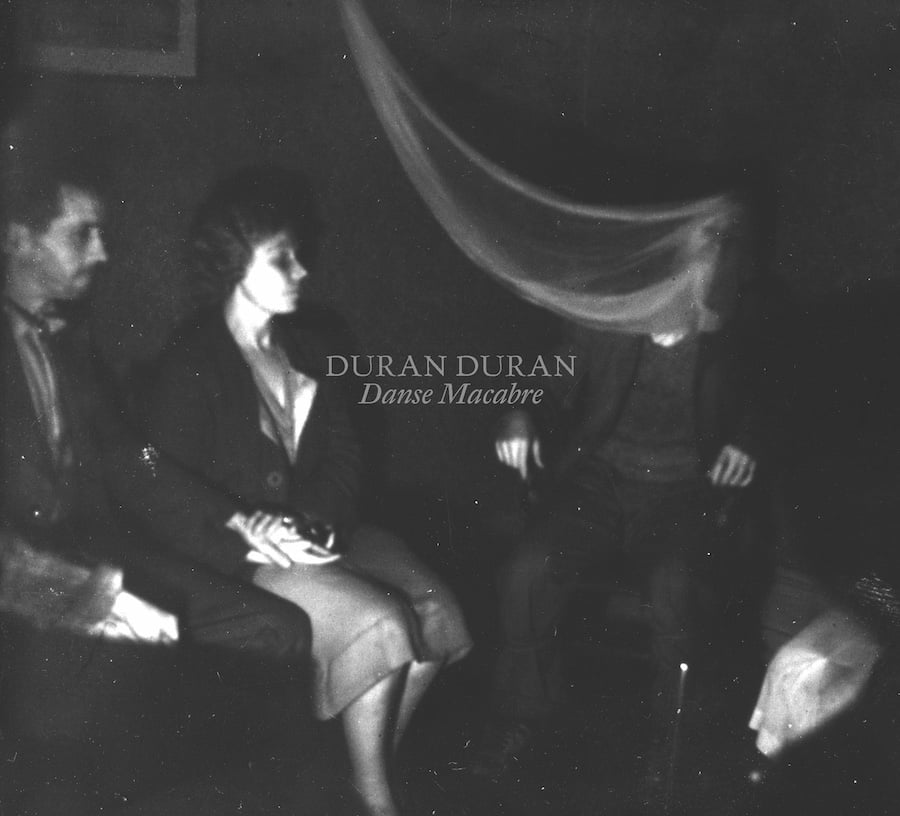
Less than two years after Future Past, Duran Duran have made another new LP, in near record time. Neither covers album, remix project or all-new hoopla, Danse Macabre is a heady combination of all three ideas, driven by a loose Halloween theme.
“At this point, we can do whatever we want,” smiles Rhodes. “This record makes us smile. It’s recaptured our sense of fun.” Duran Duran, you may have noticed, spent a great deal of their first few years together having a tremendous amount of fun.
Making the life of initially unlikely global pop stars seem as if they were having as much fun as initially unlikely global pop stars should be having didn’t go do well with some of their more earnest 80s peers.
“When we started, we could have gone out there and waved flags like a lot of other post-punk bands,” concedes Nick.
“But, instead of standing in the quagmire complaining about it, we decided to get out of it and try to drag other people out of it with us. Our place was to lift people’s spirits and sometimes take a look on the lighter side.”
Art of darkness
Danse Macabre, for all that it celebrates, well, the macabre, is a very funny album.
“If everything is darkness, the world can be pretty miserable,” reasons Rhodes. “So many horrible things are happening in the world, you need a little levity. This album is darkly funny, which makes us all happy.
“At the very heart of Duran Duran, what drives us is trying to make each other laugh when we get together.”
“I was brought up on the tradition of Bonfire Night,” admits Roger Taylor. “But I prefer Halloween. It’s more interesting.
“It’s why as a nation, Britain is slowly edging towards Halloween rather than Guy Fawkes. I’ve certainly always had a Halloween side to me. I mean, of course I have: you have to like dressing up to be a member of Duran Duran.”
Danse Macabre soon emerged from Nick’s idea to do a one-off Halloween-themed concert, when he realised the second of Duran Duran’s two-show residency at the giant Wynn hotel in Las Vegas last year fell on 31 October.
“The Vegas shows were meant to be a warm-up for The Rock And Roll Hall Of Fame,” admits Nick. Duran were duly inducted into the ceremony on 5 November, an honour that, even by the standards of industry prizes sent the band’s way since 1980, was a pretty big deal.
“When I realised we were playing on Halloween, I opened my mouth and said: ‘We can’t just do a regular show. Why don’t we surprise everyone with a Halloween show?’ Learning so many new songs, it was incredibly ambitious.”
“I really, really enjoyed wearing a wedding dress,” laughs Simon, of his outfit for A View To A Kill. “I’d never worn one before and that was the highpoint of my night.”
Virtually every time Duran try a cover in concert, they record a studio demo first, just to get used to how they can make their version work.
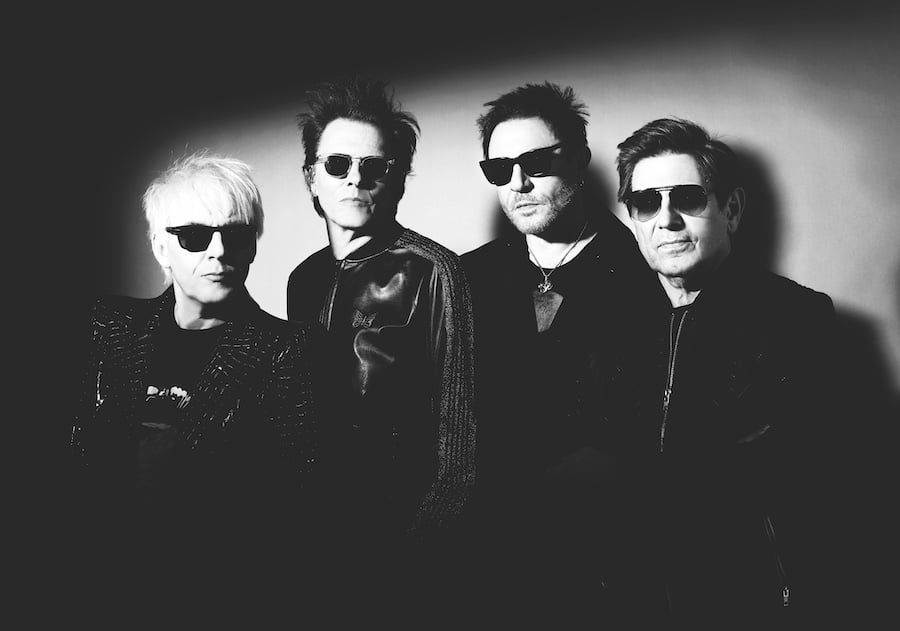
“I said to Nick: ‘We’ve got to get these out on Spotify right now!’ Nick was the one to pause for thought: ‘Maybe we should do this properly.’
“A pretty short conversation bounced around the band. Should we do a live album from the Vegas show? Should we do something more with it?”
Two weeks before rehearsals began for their UK arena tour in April last year, the band booked time in the studio: two days each with Nile Rodgers and Mr Hudson, the Birmingham producer largely responsible for 2015’s underrated Paper Gods.
As seasoned Duran Duran watchers will know, four days is generally about the time it takes the band to record a bass part for one song. “Typically, we labour over albums,” admits John.
“The last couple of albums have been hard. Sometimes, that shows. Some songs have worn a number of different clothes during their conception. By the time they come out, you’re already worn out by them. This record just feels fresh.”
Roger takes up the theme, explaining: “A lot of our studio albums have been long, tortuous processes that take years to get to the point we need. There is certainly a perfectionist streak that runs through all of the band members.
“We’re definitely a bunch of perfectionists. Sometimes, that makes for a difficult recording process, where nothing feels good enough. We’ll keep working away, recreating, remixing, reworking. With this record, it was all very straightforward.”
Speed is of the essence
Not only did the four-day deadline focus the mind, Duran’s new rapid-fire approach was suggested by Nile Rodgers, as Le Bon recalls: “When Nile walked in to the studio, he explained that sometimes, the first thing you come up with, you automatically disregard because it’s come too easily – so you don’t think it’s any good. But actually, your first instinct might be great. That’s what we did.
“We hit on ideas quickly and didn’t spend a whole load of time doubting it. It was: ‘Yeah, this is fine, let’s work on this.’ Danse Macabre’s title track came first, and that’s a very simple song.”
For Roger, it was a reminder of Duran’s earliest days, as he remembers: “The ethos for this album was: ‘Your first ideas are your best ideas. Do it quickly.’
“When you have that initial creative rush, those ideas are frequently your best ideas. That’s how we wrote the first two albums. We’d come up with tunes and go: ‘Yeah, that’s great.’ Rio and Hungry Like The Wolf were written amazingly quickly, because we trusted who we were and what we were doing.
“Once we got to Seven And The Ragged Tiger, we started to question ourselves more and become self-analytical. That’s when the tortuous process of album-making began.”
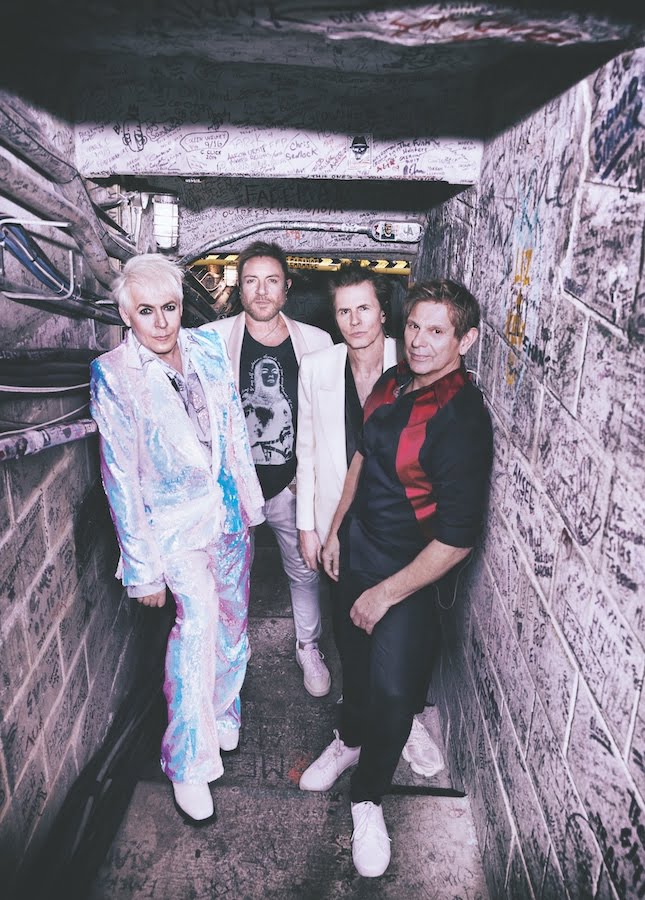
Duran Duran Danse Macabre
Of course, it also helped that the majority of the new album’s songs could be traced back to that Las Vegas show. “Everybody had their babies,” says John of the choice of cover versions.
“We were pleased with Future Past, because it gives a good sense of who we are. But on Danse Macabre, you can really see behind the curtain of who the whole band is.
“For me, it was: ‘Siouxsie And The Banshees? Fuck yeah!’ Then, Simon went somewhere with Paint It Black that nobody expected and he’s completely made it work.”
Been there before
Of course, you can’t talk about Duran Duran covers without mentioning the Thank You LP from 1995. Commercially, it instantly derailed the progress made by The Wedding Album two years previously.
It’s been rightly reassessed by critics who’ve given it a second chance since, but the record’s unavailability on physical formats means it’s been easy to dismiss Duran’s versions of Perfect Day, Watching The Detectives and Public Enemy’s 911 Is A Joke, though their instant party starter take on White Lines remains a staple in their shows 28 years on.
“The idea of how Thank You was received in 1995 only makes me want to do more covers, not less,” laughs Nick. “It’s weathered the test of time quite well, that album.
“At the time, white artists weren’t really working with black artists. One reason Thank You wasn’t successful in America can be summed up by our radio promo person telling us: ‘You need to give us a version of White Lines without the rap in. I said: ‘You’ve got to be kidding, that’s the whole point of it.’
“As for 911 Is A Joke, Public Enemy really like our version. Lou Reed told Simon of our Perfect Day: ‘That’s the way I’d like to have sung it, if I could.’ You can’t get more of a compliment.
“Some songs, in hindsight, we might have changed or not done. Ball Of Confusion we maybe shouldn’t have done. Simon wasn’t comfortable with his vocals on that one. But it’s win some, lose some and I don’t mind what people say about Thank You at all.”
The Specials’ Ghost Town is this album’s sacred cow that will doubtless have broadsheet critics stating that pop fops like Duran Duran shouldn’t touch it.
“I’m so happy Ghost Town is on there,” counters John. “I wasn’t into 2-Tone at the time. But looking back now? Holy fuck, The Specials were amazing.
“I wondered what Simon could do with it, and what Simon came back with is fantastic. As fun as the album is, we took our roles seriously. For me, I wondered: ‘How can a rhythm section take on Supernature?’ Because that’s one of the greatest dance songs of all time.”
“The originals of all these songs are obviously great,” acknowledges Rhodes. “We haven’t aimed to say: ‘How can we make our versions better?’ It’s not a competition. Most of our versions are fairly faithful. We’ve decided to simply play them in our style.”
The notable exception is Duran Duran transforming Billie Eilish’s playful lo-fi emo bop Bury A Friend from her 2019 album When We All Fall Asleep, Where Do We Go? into a full goth melodrama.
“It’s stunning, precisely what the Duran of 2023 should be doing. “It’s my favourite, too,” enthuses Simon. “John turned me on to the song, which I wasn’t that familiar with.
“Billie’s original is so brilliant, I thought: ‘How on earth am I going to do this without creating a bad impersonation of Billie Eilish?’ What she does works for her, but it wouldn’t if anyone else tried it.”
Salvation came from the seemingly unlikely source of prolific Australian neo-proggers King Gizzard And The Lizard Wizard, via their song O.N.E.
“Their debut album and O.N.E. in particular use a Middle Eastern tonality,” explains Le Bon. “They sing in a scale called Hijaz, which is very different from a regular Western melodic scale. I could now get very technical and talk about ‘flattened seconds’.”
Instead, Simon sings an impression of Billie Eilish, before his own version of Bury A Friend. It is, readers, a total treat. “As I was singing, it felt really exciting, because I took the song somewhere it hadn’t been already.
“I should also say, Billie Eilish’s lyrics are amazing. I’m very grateful for that. Duran Duran fans will know that I’m too expensive to write too many new lyrics myself.”
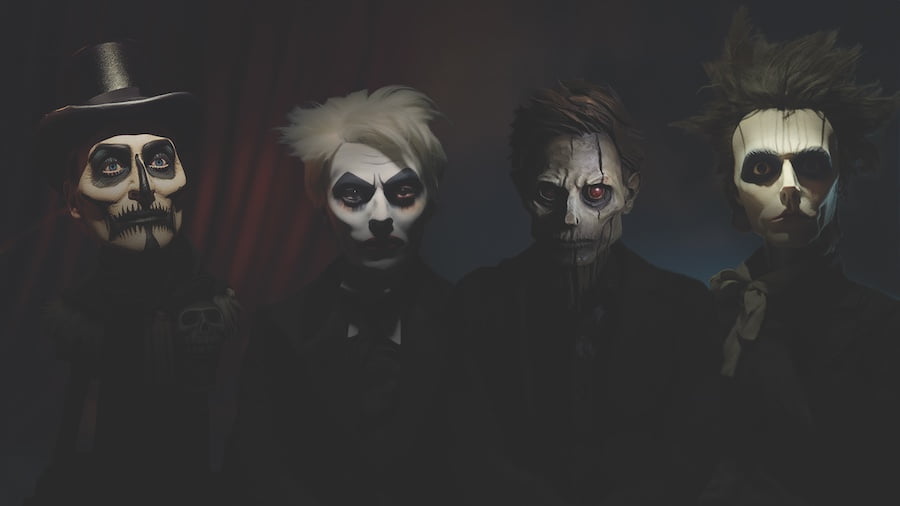
Duran Duran Danse Macabre
He’s laughing as he says it, but the idea that Simon Le Bon managed to pen lyrics for three new songs in four days is the biggest source of Duran Duran gossip in years.
“Doing it so quickly only works when you’re properly inspired,” he nods. “We were all in that mood on this album. Writing lyrics quickly also works so long as you don’t have somebody reviewing your work saying: ‘I think you need to change this and this.’
“That really fucks things up and I have a phrase for it: the lyrical policeman. The lyrical policeman doesn’t work if you want things done quickly.”
That speed of thought means the new album ends on Confession In The Afterlife. There’s an obvious question here: Why has it taken Duran Duran 43 years to create a song with the none-more-Duran title of Confession In The Afterlife?
“Had Simon shown me a song with that title in 1980, I’d have said: ‘Yes, absolutely, that’s the opening album track,’” smiles Nick, as Le Bon reveals: “I’m glad you’ve picked up on it being such a Duran title. I really love that song, it could be on an Arcadia album.
“It came from playing around with the idea of what it would feel like if you really were dead. What if there’s the retention of memory in the afterlife? I realised nothing would matter. You could say what you like, because there’s nothing anybody could do to you.”
Axe heroes unite
John eulogises regular Duran live guitarist Dom Brown’s bluesy solo on the song.
“It’s the emotional highpoint on the album,” the bassist raves. “It’s nice to represent Duran Duran’s story of guitarists on this record, and Dom plays the most emotionally charged solo on the whole album.”
Bearing in mind the role the guitar plays in Danse Macabre, that’s big talk from John Taylor. This is, of course, the only album to feature both Andy Taylor and Warren Cuccurullo.
Throw in Nile Rodgers, too, and there’s a wonderful array of guitar talent across its 13 songs. (“The album had to feature 13 songs,” emphasises Rhodes. “It’s a Halloween album, it couldn’t have any other number.”)
Nick explains the idea started from wanting Andy and Warren to play at The Rock And Roll Hall Of Fame. Warren said no because he thought it should be Andy’s time in the spotlight. Andy, of course, was then unable to appear because of his prostate cancer diagnosis.
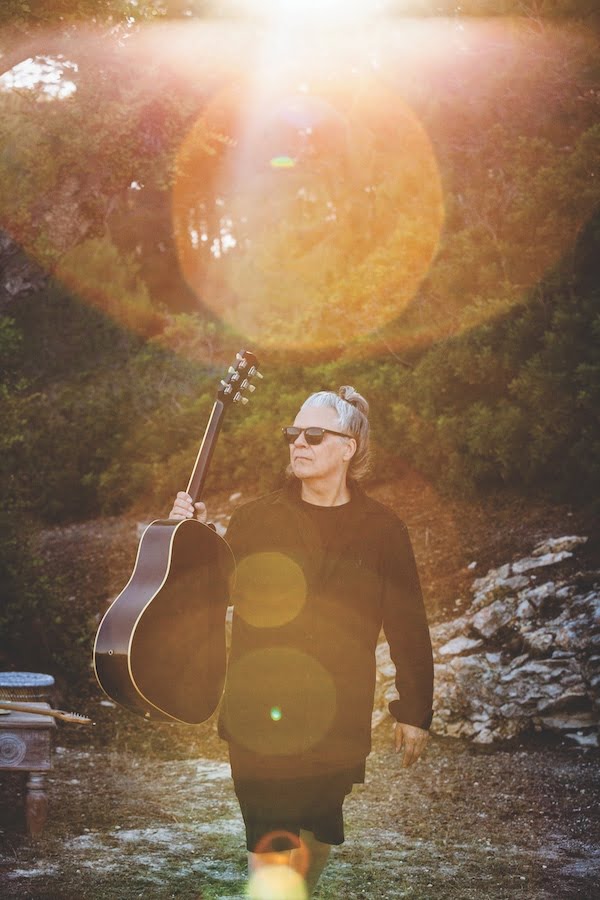
Andy Taylor
“When we started this record, I thought if Andy was able to play on it that it might be something positive for him,” recalls Nick. “The others said it’d be a nice gesture to ask. Plus, of course, Andy is a great guitarist. He thinks so fast and was able to play on 10 songs in three days.”
Simon flew with engineer Josh Blair to the guitarist’s home in Ibiza to record those parts.
“Working with Andy again was amazing,” says Le Bon. “Nick is right, Andy is so quick. Andy just loves to play guitar, so it was a privilege seeing him in action.
“It was funny how quick it was, getting back in the swing of Andy being there. Yasmin came, too, she stayed by the pool. It was just an amazing few days, a really lovely time.”
Rhodes’ reasoning was that, if Andy Taylor was temporarily rejoining Duran Duran, so should Warren Cuccurullo, missing since the original line-up reformed in 2002.
“Warren was my next thought after Andy,” the keyboardist explains. “I’ve always loved the way Warren plays. As a guitarist, Warren is one of the great wonders of the world.
“Whatever you think Warren is going to play, he does something else. His mind is a completely unpredictable maze of dark corridors, with strange gifts at the end of each one. What Warren delivers on the title track of Danse Macabre is something unique and remarkable.”
All of the band share that enthusiasm, with Roger summarising: “Whenever I play Come Undone or Ordinary World in concert, I have an enormous sense of gratitude for the extra dimension that Warren brought to Duran, so it’s amazing he’s come back for this record.”
As great as Warren’s contribution is, the fact Black Moonlight’s groove lives up to the idea of Nile Rodgers and Andy Taylor on the same song is a proper moment.
“Just stay close to Nile in the studio and you’ll be grooving,” laughs John. “Nile always stays current and is very fluid in his creativity. He doesn’t second-guess himself, he just goes with the flow.
“He and Mark Ronson are great at pushing us outside of our comfort zone. Left on our own, we might say: ‘No, we can’t do that,’ but they’re great at broadening our boundaries and saying: ‘No, it’s all cool.’”
Of the three reworked existing Duran Duran songs on Danse Macabre, Union Of The Snake’s B-side Secret Oktober is special for Andy, John and Roger – as none of them played on the 1983 original.
Famously in Duran lore, the band were told so late in the day that they needed a new B-side that only Simon, Nick and producer Alex Sadkin appear on the song.
“I’ve always loved Secret Oktober,” laughs Roger. “I’ve always been happy to do it live, as I love programming and using electronics in my kit, but I’m pleased that we’ve managed to take the song somewhere greater with the new version.”
Nick adds: “When we did the Halloween show, we thought about the obvious big Duran songs that slightly fitted into the Halloween area: The Wild Boys, Hungry Like The Wolf. But for an album, that felt less appropriate than taking some of our less predictable songs and letting them shine.”
Dusty binned
Even in that short spell of four days in the studio, not everything went perfectly. Simon was disappointed that the rest of the band rejected his idea to cover the Eagles’ Witchy Woman, noting: “I’m a huge fan of the Eagles, but it was deemed unacceptable.”
In return, the singer couldn’t get to grips with covering Dusty Springfield’s 1968 single Spooky. “The original of Spooky works because the vocal is very straight, but the backing is really curvy,” explains Le Bon.
“Each note Dusty sings is very straight and precise, and the placement of a very straight vocal over a blue-sounding backing makes it work. Another example is Canned Heat’s Going Up The Country: straight vocals over a very twangy backing.
“But our backing was as straight as Dusty’s vocal. I tried to sing the melody and it just wasn’t going to work: it was too straight over straight. So I tried to make my vocals curvy, and that didn’t work either.
“I could have tried to force myself to make it sort-of work, but I know I’d have cringed every time I heard it. I really love Spooky, but I had to say: ‘Sorry, I’m just not going to sing this.’” Another big laugh. “You have to trust the singer sometimes.”
John accepts Simon’s decision, shrugging: “For the most part, we all dug what each of us chose, but Simon just didn’t like what we did with Spooky. That’s fine – maybe we’ll make it work one day.”
As Nick points out: “You can’t win every decision, and we respect each other’s judgement. Besides, if we had finished Spooky, that would mean we’d have had 14 songs. Something would have had to be dropped from the album anyway, to get it back to 13 songs.”
Rhodes prefers to highlight how great Simon’s vocals are on their ferocious version of Talking Heads’ classic Psycho Killer: “David Byrne singing Psycho Killer is one of the greatest vocals ever, but Simon thought that song was in our area. What he does with that song shows he was totally right.”
Le Bon agrees: “Oh, I just loved doing Psycho Killer in Vegas. That’s one of our great covers, it had to be on the album.”
Danse Macabre is in effect the culmination of Nick and John’s teenage friendship, when they’d watch Hammer House Of Horror films at Nick’s parents’ house.
“As teenagers, the most exciting part of our week was watching those films,” Rhodes remembers. “For people of our generation, those films were important – they shaped us, and I’ve never forgotten their impact. You never knew what you were going to get: vampires, werewolves, maybe even Raquel Welch.”
Even before that, Nick’s love of Halloween had taken hold. Real surname Bates, Nick’s parents ran Bates’ Toy Shop
in Birmingham: “When I was 10, I’d arrange the toyshop windows. That was great fun, and I’d always put a ouija board front and centre in the display.
“My mom had complaints that it wasn’t appropriate. I asked her: ‘What’s the problem?’, because I liked the idea of having conversations with the dead. Actually, Conversations With The Dead isn’t a bad song title either.”
The young Simon Le Bon was also interested in the paranormal. “I liked scaring myself,” he chuckles. “I once convinced myself I saw a ghost. Later, of course, I realised what it was: I was just convincing myself. I don’t believe in ghosts or anything like that now.”
Despite Simon’s scepticism, Danse Macabre is Duran Duran placing themselves front and centre for Halloween mischief in music. “We wanted to capitalise on Halloween,” admits Nick. “It’s our chance to say: ‘Let’s own a bit of Halloween.’
“Let’s face it, Halloween is the most Duran Duran celebration of the year: it’s funny, uplifting and people wear fabulous outfits. What more do you want?”
What is Rhodes’ preferred Halloween costume? “I favour vampires, as they’re my spiritual family,” he considers. “But it’s difficult. When I dress up for Halloween, people just say: ‘I see Nick has come as himself.’”
Christmas is cancelled
The album certainly feels a more natural fit for the band than a Christmas record. Not that they haven’t had offers. “We were approached to do a Christmas single at one point,” reveals Roger. “We thought it was too cheesy, so we didn’t do it.
“I often say we should have said yes, because we’d still be getting a ton of royalties now. No, it was too corny. I can’t imagine we’d do a Christmas album now, unless it was an extremely different take on the idea.”
Nick gives the notion equally short shrift, saying: “I celebrate Christmas the same as everyone, but it’s not something close to my heart. In a strange, beautiful way, Halloween is dear to me. I love that it’s a pagan celebration of craziness.
“As a kid, witches, black cats, demons and monsters were much more appealing than some big guy with a beard in a red suit.”
As well as forcing Duran to go with their first instincts, the recording of Danse Macabre had to be quick, as the second leg of the Future Past Tour was approaching. The shows have received some of the best reviews of their career.
“It feels like Duran Duran have reached critical mass,” ponders Roger. “For the previous few tours, we played to our hardcore audience.
“Maybe because of The Rock And Roll Hall Of Fame, a mass of people want to see us now. We’re getting the kind of audience the Eagles have. Future Past hit the spot, too. Whatever the combination of reasons, it feels as though we’ve hit it big again.”
As huge as their shows are, could Duran keep it intimate and play Danse Macabre in full next Halloween? Ideally at a suitably spooky venue? “Oh, we absolutely should,” agrees John. “Our Halloween next year should be built around this album. It’s always good to have plans.”
Rhodes considers: “There are any number of great gothic venues in the UK. The Royal Albert Hall would be nice and grandiose. Halloween is so mainstream in America, anywhere could work.
“We could play Madison Square Garden and they’d be up for a Danse Macabre Halloween show.”
As for Simon? “The Coliseum in Italy, bowls of flame all around us, that’s the vibe Danse Macabre should have. I grew up near West Wycombe, and The Hellfire Caves there would also be brilliant.”
A pause, before a final burst of Le Bon enthusiasm. “No! HANG ON. Above The Hellfire Caves, there’s a mausoleum built in to it. It’s a gothic folly: a circle with arches and no roof. It’s in lots of Hammer Horror films. It would be like playing Stonehenge. That’s the place we should do a Danse Macabre show.”
That’s 31 October sorted, then. Halloween in music definitely now belongs to Duran. With Danse Macabre, they’ve made an album full of life – and a hint of the afterlife, too. See you under the black moonlight…
- Want more from Classic Pop magazine? Get a free digital issue when you sign up to our newsletter!
Classic Pop may earn commission from the links on this page, but we only feature products we think you will enjoy.

